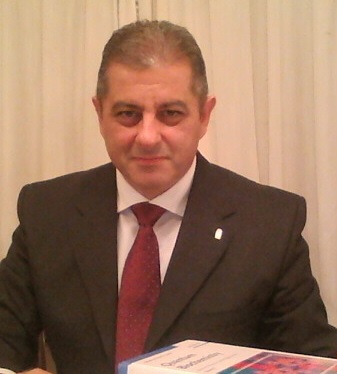 Event to gather top scientists from around the world
Event to gather top scientists from around the world
Every three years, scientists from around the globe unite on a subject that falls at the centre of all of the sciences yet remains relatively unknown to the general public – crystallography.
From July 8 to 13, experts in this realm from 27 countries (representing six continents), will gather in Halifax to share expertise, discoveries, applications and ideas – with Mount Saint Vincent University as the group’s local host.
Called Sagamore, the conference (which started in 1964) will this year feature a focus on quantum crystallography, “bringing together top scientists at the interface of crystallography, material science, quantum and computational chemistry, and solid state physics” in an environment that is inclusive of “theory and experiment, early career and established scientists, and women and visible minorities.” The conference is named after its original 1964 location – Sagamore Lodge on Lake Sagamore in New York state. The last two Sagamore conferences were held in Italy (2015) and Japan (2012).
“This is a major international event that will see some of the best researchers in the world converging on Halifax, including experimental scientists and theorists. In fact we do not have parallel sessions for this very reason and that is to bring together theory and experiment under one roof.”
— Dr. Chérif Matta, Mount chemistry and physics professor and Sagamore 2018 chair
What is crystallography?
In 2014, on the occasion of the UN’s International Year of Crystallography, UNSECO stated, “In the early 20th century, it was discovered that X-rays could be used to ‘see’ the structure of matter in a non-intrusive manner, thus beginning the dawn of modern crystallography — the science that examines the arrangement of atoms in solids. X-ray crystallography has allowed us to study the chemical bonds which draw one atom to another. Crystallographers now apply this knowledge to modify a structure and thus change its properties and behavior.”
“Since this discovery, crystallography has become the very core of structural science, revealing the structure of DNA, allowing us to understand and fabricate computer memories, showing us how proteins are created in cells and helping scientists to design powerful new materials and drugs. Thus crystallography has many applications. It permeates our daily lives and forms the backbone of industries which are increasingly reliant on knowledge generation to develop new products, in widely diverse fields that include agro-food, aeronautics, automobiles, cosmetics and computers as well as the electro-mechanical, pharmaceutical and mining industries.” (More from UNESCO)
The website of the American Chemical Society notes that, “Within the past century, crystallography has been a primary force in driving major advances in the detailed understanding of materials, synthetic chemistry, the understanding of basic principles of biological processes, genetics, and has contributed to major advances in the development of drugs for numerous diseases. As a science, crystallography has produced 28 Nobel Prizes, more than any other scientific field.”
Dr. Chérif Matta Chair of Sagamore 2018
The event begins July 8 with a welcome reception aboard Halifax’s Tall Ship Silva; the scientific program starts Monday, July 9 and continues until Friday, July 13 at the Halifax Convention Centre. Approximately 60 speakers and 20 poster presenters will be featured over the course of the 5 day event (view detailed speaker information here). As well, two major international prizes will be presented – the Miguel A. Blanco International Prize for Early Career Work in Charge Density and the Richard F. W. Bader International Prize for Excellence in Electron Density Research.
Media contact:
Communications
Mount Saint Vincent University
902-457-6439
Gillian.Batten@msvu.ca
